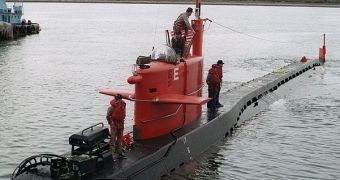For a long time during its early years, NR-1 was a classified mission vehicle, the smallest of the Navy's submarine fleet, and the only one that was able and destined to perform search and recovery missions, ocean exploration, as well as underwater installation and maintenance works up to a depth of more than half a mile (3,000 feet, more exactly, or about 915 meters). The small nuclear submarine, labeled by the National Geographic magazine as “The Navy’s Inner Space Shuttle,” could house up to 11 crew members, although the conditions were a little harsh.
“I’ve been in it for a month, and it gets a little ripe,” shared Robert Ballard, a former Navy man who was among those who found the Titanic's wreck and John F. Kennedy’s PT 109 (but not with NR-1). “We’ve lost an asset, and it’s too bad,” he told the Navy Times. The submarine was launched in January 1969, and its nuclear reactor allowed it to skip regular surface checks for periods as long as whole months. It was provided with wheels, since it could dive so deep that it touched ocean bottom, moving at a speed of 3 knots (3.5 mph or 5.6 km/h).
“That’s more than fast enough to operate near the ocean floor,” explained commander John McGrath, the last of NR-1’s officers in charge. “I’m a big fan of the ship. I think it’s an incredible chapter in Navy history.” Among many other feats, the submarine helped search for the remains of the Challenger spacecraft, after it exploded in the atmosphere in 1986. Besides having wheels, the submarine was provided with a number of other unique features.
Amongst them were a radar system that, according to McGrath, could detect an “empty soda can buried in the sand a mile away,” 29 external lights that lit up the ocean floor, 3 portholes, 13 cameras, and even a robotic arm. However, although its engine didn't reach the end of its functionality, the submersible “reached the end of its service life,” as McGrath stated, especially since “A lot of our suppliers and logistic sources have long since gone out of business.”
The submarine was retired during a high-level military ceremony, and is currently undergoing disaffecting operations (technicians are having its nuclear reactor removed), before it will join the Washington-based submarine graveyard in Puget Sound.

 14 DAY TRIAL //
14 DAY TRIAL //